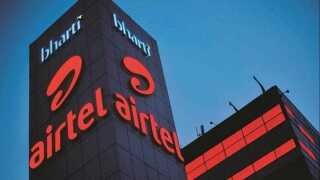O3b will launch a constellation of satellites into a medium earth orbit in 2013.
The company, which is based in Jersey in the Channel Islands, secured the funding from a collection of investors and banks last November, enabling it to finance the launch of its first eight satellites in 2013. The project aims to create a constellation of high-throughput satellites designed to provide a “fibre in the sky” alternative for the “other three billion” people currently without regular access to broadband internet.
The satellites will be constructed by ales Alenia Space at its manufacturing facility in Cannes and then will be launched by Russian Soyuz rockets from the new Sinamary spaceport in French Guiana. Key shareholders in the project include satellite operator SES, HSBC, Liberty Global and Google.
The technology will have the ability to provide internet connectivity at fibre-like speeds to areas of the world that are currently underserved or not served at all. The reach of fibre is limited in the emerging markets, and O3b will fill that huge gap with a constellation of satellites that are capable of providing low latency service at competitive prices,” said Jim Collins, senior vice president of corporate communications at SES. “For far too long, this part of the world has not benefited from broadband access. So when you look at the enormous potential for growth and increased prosperity that comes with this connectivity, it is easy to see how O3b has the potential to vastly enhance the lives of so many.”
The constellation will be placed in a medium earth orbit (MEO), enabling the satellites to operate at a much closer proximity from earth (approximately 8,000km) than standard geosynchronous (GEO) satellites (approximately 36,000km). The company claims the satellites will be capable of roundtrip data transmission times of about 100 milliseconds, compared to GEO satellite transmission times of over 500 milliseconds. A minimum of six satellites are required to achieve constant coverage, but O3b hopes to send a further 16 satellites into orbit during the eight months after the initial launch.
“The use of MEO is interesting as it will reduce internet latency compared with GEO. However, whether this is a critical parameter for internet communications applications is open to debate,” said Sir Martin Sweeting, group executive chairman of Surrey Satellite Technology (SSTL). “The major challenge will be for the on-board electronics to survive the radiation in the inner Van Allen belt at that altitude.”
Once launched, the satellites will act as backhaul, connecting the traffic of local telecoms and internet providers to the global - bre infrastructure. By eliminating the need to construct extensive and expensive terrestrial backhaul networks, O3b believes the satellites will offer an affordable way of linking base stations to the internet.
O3b's system uses parabolic antennas, which it claims can handle large chunks of data that help deliver an ultralow-latency trunking solution. Trunking services will be delivered from the O3B satellites via a dedicated Ka band, which will allow O3b the opportunity to provide gigabytes of capacity via its satellite transponders.
According to James Brehm, senior consultant at Frost & Sullivan, utilising satellite communication for backhaul is a good way to avoid the onerous costs of having to deploy fibre, but could also bring several challenges. “The use of satellites as a single form of backhaul may pose latency issues providing an experience that is not uniform to that in other regions. A combinational approach pairing satellite with other forms of backhaul (WiMAX, microwave, etc) could prove to be a much better solution,” said Brehm. “Much has been done in recent years to grow the wireless base in emerging regions, while much more still needs to be done.”




